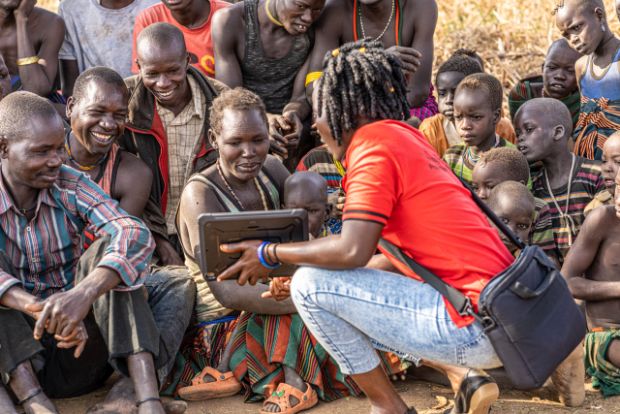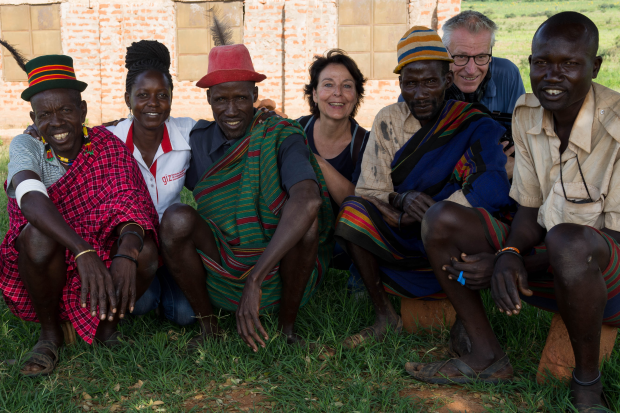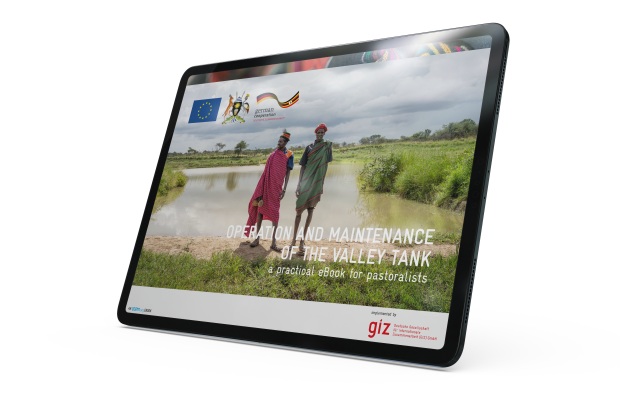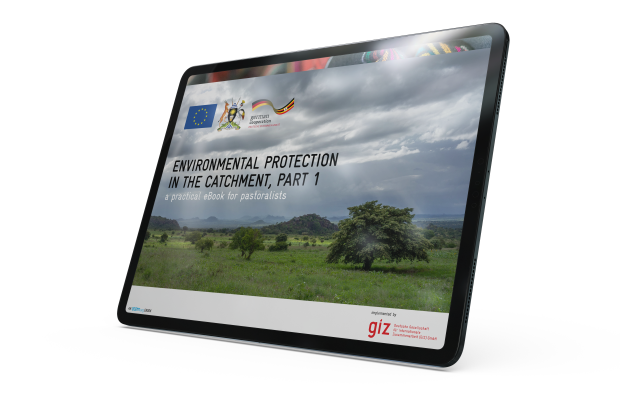Development of 4 eBooks in Karamoja, Uganda for GIZ


The joint EU/BMZ/GIZ/ENWASS project addresses the situation by strengthening the capacities of the relevant institutions for a sustainable increase of water storage capacity for production purposes, embedded in a climate sensitive water resources management on the catchment level. As such, the project combines the physical construction of water reservoirs in two catchments in Karamoja with a strong focus on technical assistance at the national, regional and local levels to ensure the sustainability of the infrastructure.
As part of the EU’s Development Initiative for Northern Uganda, this project contributes to the consolidation of stability in Northern Uganda, the eradication of poverty and under-nutrition and the strengthening of the foundations for sustainable and socio-economic development as well.

The objective of the consultancy of eeem.org is to support the socio-cultural aspect of the source protection of valley tanks in Karamoja. In the semi-arid region, water for production infrastructure, i.e. valley tanks and dams, are mainly used by pastoralists for their livestock but also for domestic purposes and not yet much for agricultural production. The aim of the consultancy is to support the mind-set change of water users and to educate them – using modern technology – on options how to use their water for a sustainable production infrastructure. Due to different user groups – which include both the local population, but especially in the dry season Turkana pastoralists from Kenya – resource-friendly catchment management as well as the maintenance of valley tanks are extremely problematic.
Results
After our research and field visits from July to August 2019 and January to February 2020 we have developed, tested and finalized four e-Books in English and Karamojong.
eBook 1: Water source protection at the valley tank

This eBook consists of 9 videos and 86 interactive pages with a lot of explanations and tasks. As this module had to deal especially with technologies and activities to be implemented at valley tanks to reduce erosion and evaporation as well as to increase water quality and quantity we focused on the following teaching targets and learning objectives:
Learning and applying practical crafts and/or skills
– Planting of vetiver
– Tree planting
– Fencing (to improve/upgrade existing barbed wire fence with milk bush and thorns)
Understanding natural and physical processes
– evaporation and
– erosion and their dependencies
Transferring the physical processes of evaporation and erosion to a concrete situation at a valley tank.
Learning the above-mentioned technical terms which do not exist in Karamojong by typing/using the English words in appropriate contexts.
Understanding the principal structure of a valley tank to avoid evaporation and erosion.
Please have a look at the video: User guide – eBooks for illiterates
eBook 2: Operation and Maintenance of the valley tank

This eBook contains 9 videos and 74 interactive pages with explanations and tasks. As the goal of this module was to increase ownership and sustainability, to reduce vandalism and to regulate access for livestock we focused on the following teaching targets and learning objectives:
Learning how to operate and to maintain the structure of a valley tank, e. g. repairing the fence.
Learning the importance of proper communication among communities and the government and overcoming misunderstandings.
Learning the consequences of proper maintenance in comparison to total neglect with extremely harmful consequences.
Teaching rules for maintenance and drawing consequences in real-life situations.
Learning the importance of ownership, initiative and taking responsibility for their “own” valley tank.
Transfer of traditional knowledge to the actual organization of watering herds at a valley tank.
Please have a look at the video: Appreciating traditional knowledge
eBook 3: Environmental protection in the catchment, part 1

This eBook contains 10 videos and 84 interactive pages with explanations and tasks. As this module had to engage user groups in discussing harmful practices, e.g. charcoal production which leads to deforestation that destroy catchments and consequently reduce the productivity of the land as well as the biodiversity we focused on the following teaching targets and learning objectives:
Showing the devastating effects of charcoal production to the environment.
Showing dependencies between deforestation and erosion.
Showing alternative ‚survival strategies‘ to charcoal production.
Understanding that charcoal production is a criminal act with negative effects such as conviction/jail.
Understanding the socio-economic structure of charcoal production:
– Learning and understanding the meaning of terms like „supply, demand and exploitation“ with their impact on the life in a community/village.
– Learning that only the charcoal producers are taking the risk in terms of being punished.
– Getting to know the consequences of wrong conduct: Destroying their own environment while the profit is with the big shots in Kampala.
Learning the interdependence of “evaporation” and charcoal production and understanding the long-lasting effects.
Understanding that charcoal production is not sustainable for the environment.
Learning how to manage natural resources management by planting trees to avoid evaporation and erosion.
Learning the practical skills and steps how to plant a tree.
Introducing farming practices: trees as resources for food and health.
Please have a look at the video: Environmental awareness rising
eBook 4: Environmental protection in the catchment, part 2

This eBook consists of 8 videos and 82 interactive pages with explanations and tasks. As this module had to teach mainly how to do intensive vegetable gardening (round garden) aiming at improving livelihoods and understanding the negative consequences of bush burning and wrong agricultural practices which lead to stronger erosion and less soil fertility we focused on the following teaching targets and learning objectives:
Planning, organisation and implementation how to build a round garden as a community effort.
Learning practical steps how to build and construct a round garden and putting it into practice.
Introducing new vegetable varieties and species.
Learning how to do intensive vegetable gardening aiming at improving livelihoods.
Understanding the negative consequences of bush burning and wrong agricultural practices (maximum tillage) which eventually and ultimately lead to stronger erosion and less soil fertility.
Understanding that intercropping, e. g. maize and beans, strengthens soil fertility.
Promoting the stock keeping of seeds to encourage and foster long term planning.
Introducing the idea of a „value chain“, e. g. by producing flour from cassava roots which can be eaten or sold during drought.
Please have a look at the video: Feedback loop and spreading
Petra Dilthey and Uli Schwarz
